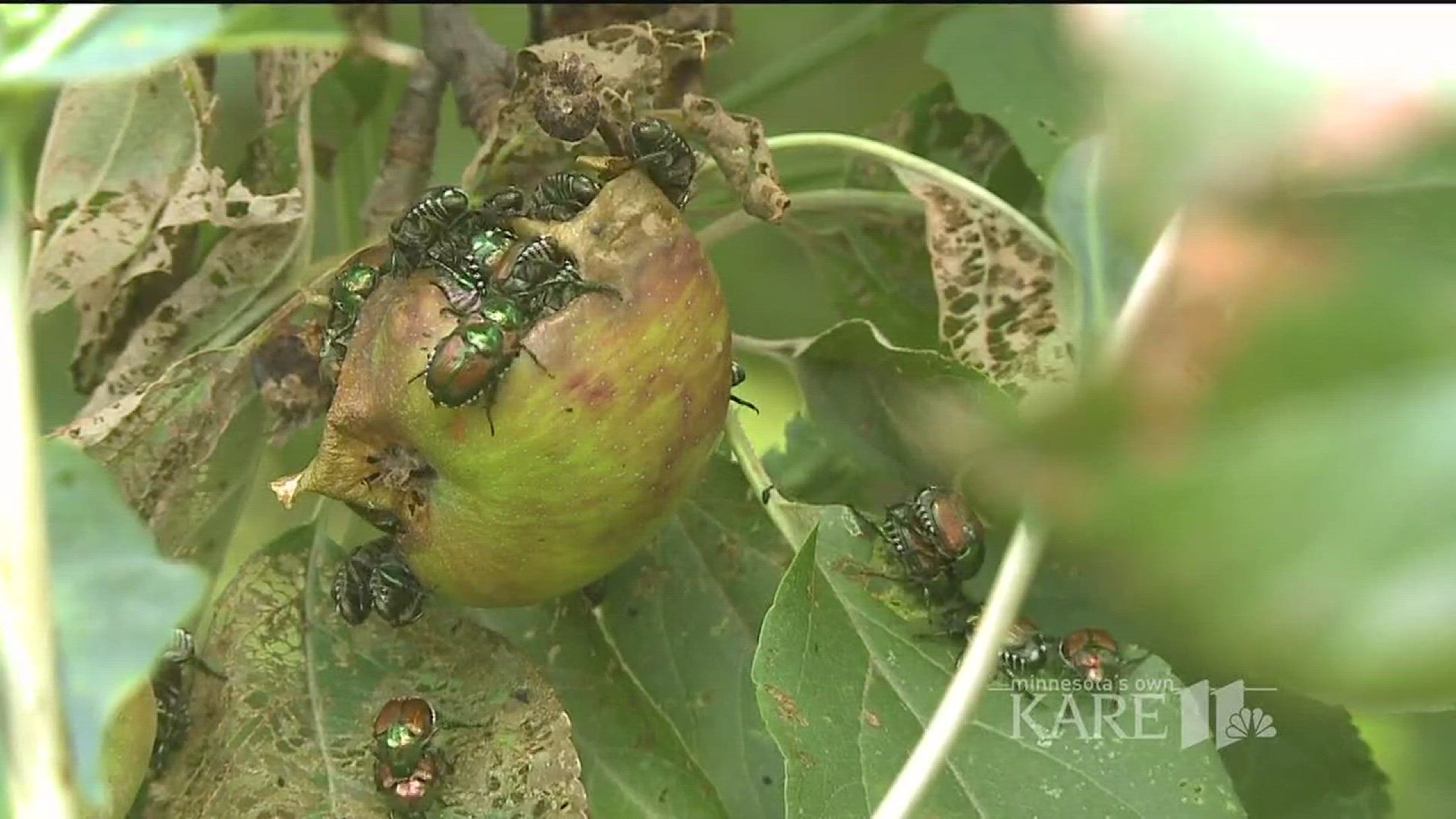ST. PAUL, Minn. - Minnesotans may be seeing more Japanese beetles around the garden this year.
Experts say the destructive pests are thriving, with the state having one of the worst seasons in years.
U of M Entomologist Jeff Hahn doesn't have to go far to find the little green pests everyone's talking about.
"You can certainly see where they have been," he says, finding plenty of them at the university display garden in St. Paul. "They kind of look like bees flying around."
But unlike those trusted pollinators helping to bring plants to life, these bugs do the exact opposite.
"If you look at them here, they're actually starting to eat the fruit," Hahn says.
The beetles have been known to snack on more than 300 species of plants and trees.
Some of their favorite meals include apples, grapes and raspberries, but the beetles also go after garden favorites like basil and beans. Some trees are also susceptible including birch and linden.
"We saw pretty high numbers last year, and that trend has definitely continued," Hahn says.
That's partially thanks to heavy rain last July, which kept the soil moist over the fall and winter.
This, in turn, protected the beetles' eggs through the harsh months so they could hatch this summer and wreak havoc on people's gardens.
The question on everyone's mind now is, what can be done about them?
"At this point in the summer, it's going to be problematic," Hahn says. "It's going to be challenging."
The safest solution is to shake off as many beetles as you can into a bucket of soapy water and drown them.
You can also try out a few insecticides, but Hahn suggests spraying them at night to minimize the risk of killing bees and other pollinators.
Hahn says there are also specially designed traps you can buy, but he doesn't recommend using them.
"You can trap a lot of them, but what we've seen is the traps attract more bugs than you can catch, so, instead of making things better, you're actually making it worse."
The good news is, the problem will be gone soon.
"By the middle of August I think, their number will definitely start declining," Hahn says.
The bad news?
"The rainfall we've had this year, probably will mean next year we'll have similar numbers," he says.
Hahn says there's not much you can do to prevent the beetles from coming next year. They lay their eggs deep underground and they're nearly impossible to remove.
However, he does suggest getting an early start with your mediation plan. The beetles typically start coming out of the ground in early July, which is when you start thinking about a plan for controlling them.
"You should start thinking about insecticides or other safer methods," Hahn says.
If you have a tree that's already infected, Hahn says you should be fine, as long as your tree was healthy to begin with. One bad year won't be enough to kill off your trees, but Hahn says several bad years in a row might push them over the edge.

